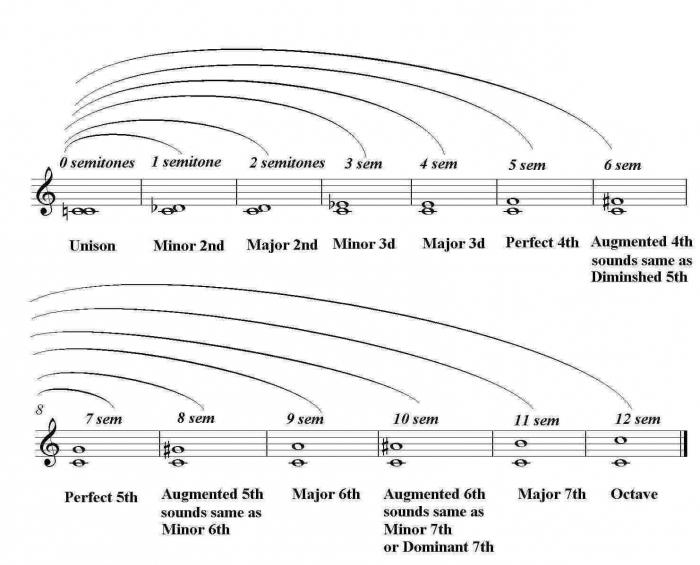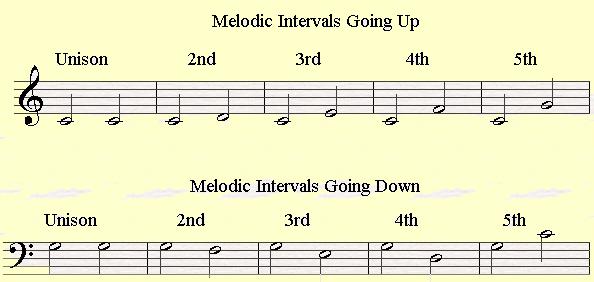The theory of music is the main component of this art form, without which it is completely impossible to understand and comprehend all the facets of beauty. Understanding it is not as difficult as it might seem at first. The main thing is to learn all the components of this art. These include the notorious intervals. There are 8 of them in music. However, these are the main combinations of sounds that fit within the limits of one octave, but in reality there are a little more.

Intervals in music are studied by a science called solfeggio, and these basics are laid in the minds of very young musicians. This term in theory refers to a sequence that begins with the number 1 and ends with 8. A numeric indicator indicates the number of notes that spans the interval. And in order to understand this in more detail, we propose to consider specific examples and, of course, the list of intervals itself. It is also worth noting that the intervals in music are clean, that is, one of a kind, and among them there are small and large.
So, at number one there is prima in solfeggio. An interval that consists of a single note. In practice, it may sound like two consecutive sounds or as one continuous sound. It has no varieties; therefore, it bears the so-called “status” of the pure. In notes for beginner musicians it is often defined as ch1, that is, “pure prima”.
The next music. the interval, which is equal to the number two, is called the second. Covers two adjacent notes and sounds pretty sharp. A second can be small, if the adjacent notes form a half-tone with their sound, and if there is a whole tone between them, then it becomes large. The notes are indicated as m2 and B2, respectively.
Small and large can also be a third, which symbolizes the number 3. This interval is part of the tonic triad, its beginning or end. It is he who determines the mode - major or minor. If a big third lies at the beginning of a triad, then it is characterized as major and sounds joyful. If this chord begins with a small interval, then it is minor and has a mysterious and slightly sad color. In notes, thirds are defined as b3 and m3.

As mentioned above, intervals in music are clean, that is, without the so-called “declination”. These include the quart and fifth. They are indicated by the numbers 4 and 5. The quart has a somewhat strict and stable sound, and is also an introductory interval, because it is such a distance between the fourth and first steps of any scale. Quinta is its exact opposite. Covering 5 steps in its range, it is, as it were, a bridge between the lowest and highest sounds of tonic triads. Depending on what the middle stage of such a chord will be, a lead will be determined - major or minor. In musical notation, you can find pure quartes and fifths, marked as ch4 and ch5.
They are followed by sextus and septima. These are intervals that are large and small. Sexta (6) always has a beautiful and mysterious sound, it is with her that many songs begin (“A Christmas tree was born in the forest”, “Beautiful far away”). And septima, on the contrary, is perceived sharply by the ear. Small septima is an excellent “bridge”, into which other sounds can form, forming an extraordinarily beautiful seventh chord. The big one, as a rule, is used as an introductory interval in many classical works. On the stave you will find these sound combinations designated as m6 and b6 for sexta and m7 and b7 for septima.
The last interval - an octave - is denoted by the number 8. It represents the same sound, located only with a difference of one octave (for example, “to” the small octave and “to” the first). It is designated as ch8.
Many people are confused about what a musical interval is. The answer to this question is simple, you just need to open the solfeggio textbook and understand its essence.